How to grow hair after chemo? There must be an answer to how to grow hair after chemo. Let’s find out. The answer depends on the treatment: chemotherapy, whole-brain radiation, or tamoxifen. If you have chemotherapy, here is a general schedule: Two to three weeks after the end of chemotherapy: soft fudge. This article will discuss growing hair after chemo.
Hair loss is a sign to the world that you have cancer for many people. You may be more afraid of this side effect than other chemotherapy issues if you don’t feel comfortable discussing this information with others. Discussing your worries with your cancer care team and planning for the likelihood of hair loss can help you cope with this tough side effect of therapy.
What causes it to happen?
According to Mayoclinic, Chemotherapy treatments are potent therapies that target cancer cells that are rapidly multiplying. Unfortunately, these treatments also target your body’s other quickly developing cells, including your hair roots.
Chemotherapy can result in hair loss all over the body, vital solutions on Amazon for your healthy life not only on the scalp. Eyelashes, eyebrows, armpit, pubic, and other body hair can fall out at any time. Some chemotherapy medications induce hair loss more than others, and varying dosages might result in anything from thinning to full baldness.
Discuss the medicine you’ll be taking with your doctor or nurse. They will be able to inform you what to expect.
Thankfully, hair loss caused by chemotherapy is usually very temporary. After your treatment, your hair should regenerate in three to six months, though it may be a different tint or texture for a while.

Grow hair after chemo
One month after the original hair began to grow at its normal rate. Fortunately, hair follicles are temporary most of the time from chemotherapy. You can expect to reshape your hair three to six months after the end of your treatment. Chemotherapy can cause partial or complete hair loss but this side effect is usually temporary.
Chemotherapy can affect both healthy and unhealthy cells that support hair growth, including cells in the hair follicles to grow hair after chemo. This is why during treatment, a person’s hair falls on the head, thighs, eyebrows, and elsewhere in the body. When hair fall occurs, it starts within 2 weeks of treatment and becomes more intense for 1-2 months.
The hair does not begin to grow immediately after the last chemotherapy treatment. This is because chemotherapy takes time to completely leave the body and stop invading healthy dividing cells. Most people undergoing chemotherapy will begin to see thin, fuzzy hair a few weeks after their last treatment. Within a month or two after the last treatment, real hair can begin to grow properly.
Some people with chemotherapy experience permanent hair fall. Some drugs, such as docetaxel (Taxot), may have this effect.
All hair goes through the rest, in which it does not grow. The hair can also fall off when it reaches a certain length or when a person pulls it off. Thus, some hair is always applied to the skin of the head. Musical Instruments. Instrumental Software. Analog and Digital Synthesizers. Combo Organs.
What is expected after Chemo?
The following timeline indicates what most people expect to happen after chemotherapy:
- 2-3 weeks: Light, smoky hair forms.
- 1-2 months: Thick hair begins to grow.
- 2-5 months: An inch of hair can grow.
- Month: Covering patches of rash can take up about 2-5 inches of hair. People with very short hair may be able to wear an earlier style.
- 12 months: Hair grows up to 4-6 inches long and long enough to brush or style.
It can take years for the hair to return to its previous style, especially for people who once had very long hair.
Keeping chemo curls away
It’s critical to take as much care of your curls as possible when your hair regrows. There are a few things you can do to keep your curls as healthy as possible while also ensuring that your hair continues to develop. Sports Apparel & Accessories·Sports, Exercise Equipment·Outdoors & Recreation·Accessories & Services. Here are a few pointers to consider:
- To stimulate follicles, lightly massage your scalp.
- If you’re combing your hair or trying to untangle knots, use a moist brush.
- To avoid irritating your scalp, avoid using hot water.
- Look into different conditioners and chemicals that might help you maintain your sensitive hair.
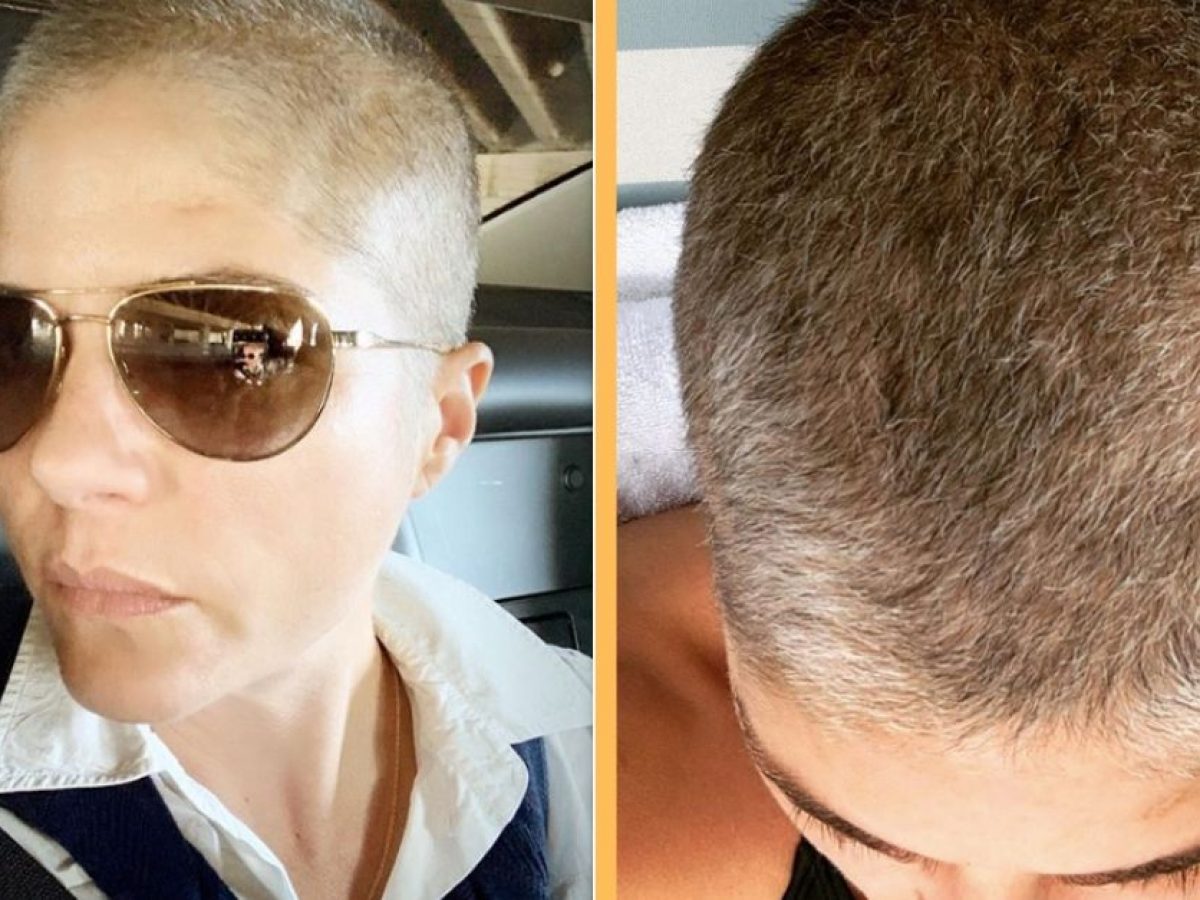
Chemo and physical challenges
In a credible source in a 2002 study in the PLOS One journal, 1,470 people who underwent chemotherapy as part of their breast cancer treatment:
- About 5% of respondents said that their hair began to grow backward before treatment was finished.
- About 5% of respondents said that this increased on average 6 months after discontinuing treatment.
- A small percentage said it did not rise or rise 6 months before the end of treatment.
After chemotherapy, the hair first develops as thin fudge. It can be straight or it can be tough to style. Being too thin, it may not be visible from a distance. Some hair follicles may enter during active growth before others. When this happens, the length of the hair can be different, which makes it more difficult to style. Likewise, it may appear patched or unexpected at first.
According to the PLOS research:
- About 58% of the respondents said that their hair was thinner, and 32% said it had not changed.
- In 63% of the respondents, the hair became heavy or curled, while 25% said that their hair texture had not changed
- Hair color did not change in 53% of the respondents, and 38% said that their hair grew white or gray.
Sometimes, the change is temporary to grow hair after chemo. In other cases, it may be permanent. After chemotherapy, there is no way to say in advance whether the hair texture will change, or if the change is permanent. It states that taking docetaxel or Busulfan may increase the chances of permanent hair loss.
The physicians still do not fully understand why the texture of the hair sometimes changes even after chemotherapy. This treatment damages the hair follicles or the genes that control hair growth to grow hair after chemo.
The following are some hair care tips that can help keep a person’s hair healthy as it recovers:
- Limit brushing and styling
- To avoid excess hair loss during the regrowth period, people should avoid:
- Excessively brush or pull hair
- Style hair with a host device, such as a flat iron or blow dryer
- Using dyes and purses for the first few months
- Wearing a hat and applying sunscreen can protect the skin of the head from the ultraviolet rays while the hair is grown.
- Try hair re-growth treatments
- A person should talk to their doctor before using hair restoration treatments.
- Some drugs encourage hair regeneration after chemotherapy, but the results differ. The goal of most hair regeneration drugs is to treat other causes of hair fall than chemotherapy.
Grow hair after chemo: FAQs
1. Hair is thicker after chemo?
Most people who receive chemotherapy will begin to see thin, fuzzy hair in limited amounts a few weeks after their last treatment. Within a month or two after the last treatment, real hair begins to grow properly. A small fraction of people undergoing chemotherapy will never regrow their hair. Fresh Flower Bouquet Delivery for All Occasions.
2. How long does it take for eyebrows and eyelashes to come back after chemo?
It takes about 6-8 weeks. If you are missing out on injuries during treatment, they may take a little longer to get back than the hair in your head. It takes about 6-8 weeks to re-grow the lashes. They will probably become rare and thin at first, attaining perfection over time.
3. Why change your hair after chemo?
Chemo hair grows more slowly even after the treatment is done, and after this, patients can pick up extra pigment, Patel said. However, physicians are not entirely sure what causes the subsequent chemo change in hair texture.
4. Does Gray come back after Chemo?
Some women who regularly do hair color treatments are surprised when the new hair growth is completely gray. Hair texture usually results in chemotherapy, and radiation effects of tamoxifen on the hair follicle after it has completely gone.
5. When will you be able to re-grow your hair?
It may take many weeks for your hair to repair and grow again following therapy. When your hair begins to regrow, it will most likely look different from the hair you lost. However, the distinction is generally just transient.
Your new hair may have a different texture or color than your old hair. It might be curlier than before, or it could be gray until the cells that govern the pigment in your hair reactivate.
6. After the chemo does the hair fall backward?
Chemotherapy not only causes hair loss but also affects hair growth. At the end of treatment or soon after you finish your last chemotherapy regimen, your hair will start to come back. Post-chemo hair is referred to as chemo curls when it is very curly.

7. What can you anticipate?
Hair loss normally starts two to four weeks after you begin therapy. It might either fall out in clumps or gradually. Loose hair will most likely accumulate on your pillow, in your brushes or comb, and in your sink or shower drain. It’s possible that your scalp is irritated.
During your treatment and for a few weeks later, you will experience hair loss. Your therapy will determine whether your hair thins or you get entirely bald.
Hair loss is a disturbing side effect of cancer therapy, according to cancer patients. Every time you look in the mirror, your altered appearance serves as a reminder of your disease and everything you’ve gone through since your diagnosis.
8. Why do you need to flush the toilet twice after giving the chemo?
Why should you flush the toilet twice after chemotherapy? You need to be careful to protect yourself, your family members, and your caregivers when it comes to chemotherapy medicine. Chemotherapy releases the body through urine, vomiting, blood, feces, sweat, mucus, and sexual fluid.
9. How many rounds can a person have?
You may need four to eight cycles to treat your cancer. A series of cycles is called a course. It may take 3 to 6 months to finish your course – and you may need multiple courses in chemo to overcome cancer. Abramson Cancer Center at the University of Pennsylvania: “Chemotherapy: Basics Bas”
10. Do the eyelashes come back after chemotherapy?
From burns to chemotherapy, people lose their eyesight for many reasons. Although it may take a while, the eyelashes usually come back. Like the hair on the skin of the head, the eyelids also go through the growth cycle, so a few splashes are usually not a cause for concern. Health Supplements. Healthy Aging. Vitality. Stress Relief. Restful Sleep.
11. Should you shave your head after chemo?
Cutting or shaving your hair is not essential, but it is often recommended. Some people think that if they cut their hair short before chemotherapy, it becomes unadulterated with long hair on the spine.
12. How can I keep my hair in chemo?
Women who use cold caps or scalp cooling systems during chemotherapy are advised to give their hair away during treatment:
- There is no push dry, hot roller, or straight ironing.
- Simply shampoo every third day with cool water and a gentle shampoo.
- No pigmentation until 3 months after chemotherapy.
- Gentle lid and brush.
13. Do you always lose hair with chemo?
Chemotherapy can cause hair loss all over your body – not just the skin on your head. Sometimes your eyelashes, eyebrows, armpits, pubic, and other body hair also fall. Some chemotherapy drugs are more likely to cause hair loss than others, and different doses can only cause nausea.
14. Do you need to cover your head?
It’s entirely up to you whether or not you cover your head while your hair comes out. Hair is connected with personal identity and health for many people, thus many prefer to keep that look by wearing a wig. Others choose scarves and caps. Others opt to wear no head covering at all.
Inquire with your doctor or a hospital social worker about local options to assist you in locating the finest head covering for you. Look Good Feel Better is a free service that gives cancer patients makeovers and aesthetic advice. These classes are available in the United States as well as in a number of other countries. The American Cancer Society’s local chapters offer a variety of seminars.
15. Can radiation therapy cause hair loss?
Yes, hair loss is another side effect of radiation treatment. Radiation therapy, like chemotherapy, targets rapidly developing cells in the body, but it only affects the area where the treatment is focused. If your head is exposed to radiation, you will most likely lose your hair. Hand Crafted Personal Care Items for Men.
After your treatments are finished, your hair normally starts to regrow. However, your therapy will determine whether it returns to its previous thickness and fullness. The impact of different types of radiation and dosages on your hair will vary. Higher radiation dosages might result in permanent hair loss. So that you know what to expect, talk to your doctor about the dose you’ll be getting.
Radiation therapy has an effect on your skin as well. It’s conceivable that the treatment area may be red and seem burnt or tanned. Because your skin will be susceptible to cold and sunlight, it’s a good idea to cover your head with a protective cap or scarf if your radiation treatment is to your head. Your scalp may be irritated by wigs and other hairpieces.
16. Are there any chemotherapy medicines that have a greater impact on hair?
According to Healthline, It’s worth noting that certain chemotherapy medicines are always associated with hair loss, while others are not. That’s why some people may go through numerous rounds of chemotherapy without ever losing a strand of hair.
- In 80% of cases, anti-microtubule chemotherapy induces hair loss.
- In more than 60% of instances, topoisomerase inhibitors induce hair loss.
- Hair loss is caused by alkylators in fewer than 60% of instances.
- Hair loss is caused by anti-metabolites in 10 to 50% of instances.
Therapies that utilize numerous chemotherapeutic medications or techniques are more likely to induce hair loss than treatments that just use one form of therapy, according to a 2017 scientific review.
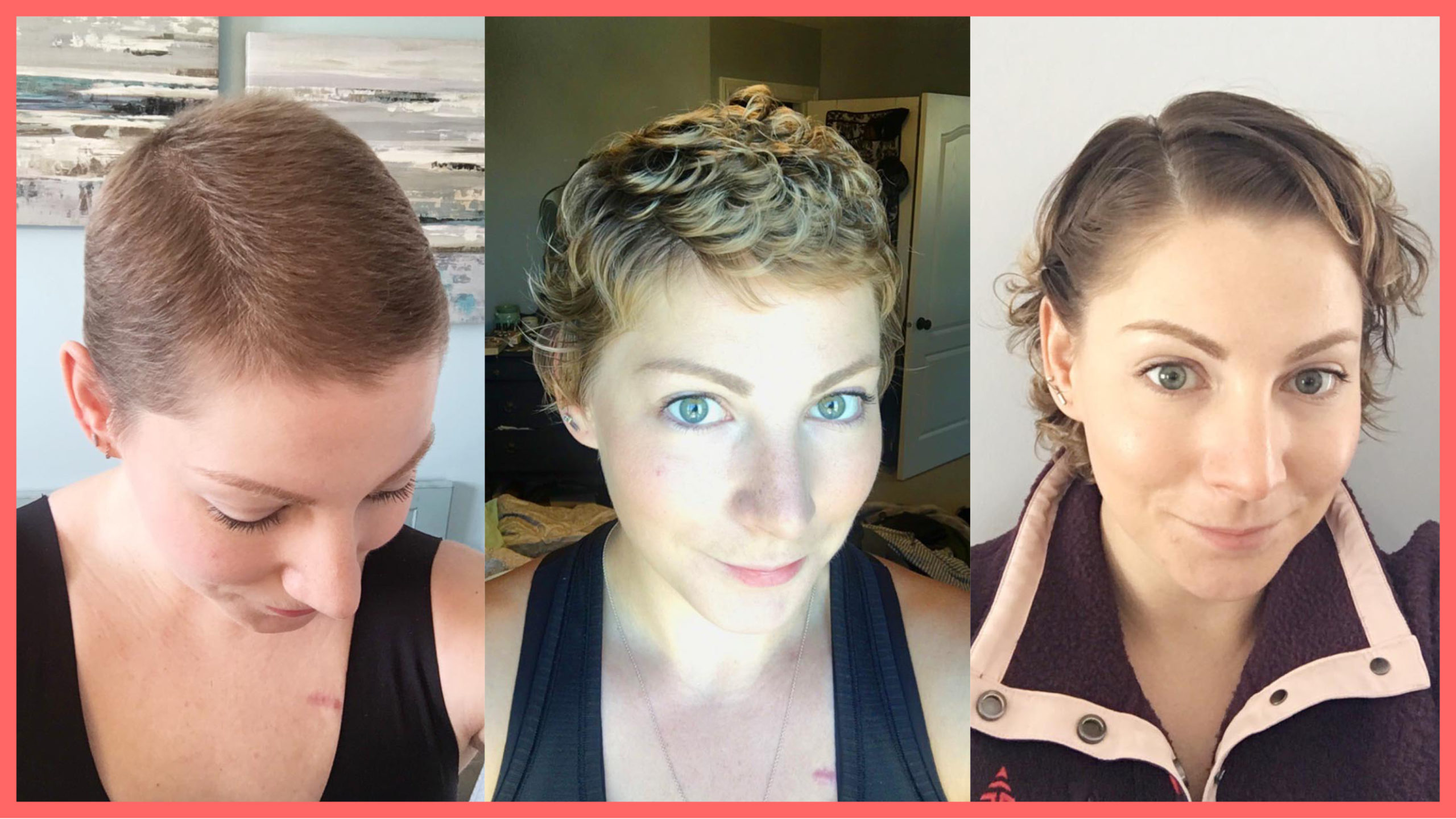
17. Why does chemotherapy cause hair loss?
According to Breastcancer.org, Chemotherapy can cause hair loss because it targets all rapidly dividing cells, including healthy and malignant cells. Hair follicles, the skin structures from which hair develops, include some of the body’s fastest-growing cells.
Hair follicle cells divide every 23 to 72 hours if you aren’t receiving cancer therapy. Chemotherapy, however, destroys hair follicle cells while it works against cancer cells. You may lose part or all of your hair within a few weeks after starting some chemotherapy medications. Hair loss can occur gradually or suddenly.
18. When will I be able to have my first haircut?
According to Cancer Haircare, when it comes to cutting your hair, there is no set rule; it all depends on the state of your hair and the style you want to achieve. It is absolutely a personal choice.
Hair grows at various rates in different places, so you may want to trim one region but not another. Many people, for example, discover that there are longer hair sprouts that they wish to snip at, especially around the ears and hairline, where they might seem untidy if they stick out. It’s quite OK to give these places a trim before the rest. Take a peek at our section on new hairstyles. Skincare Items for Beautiful Ladies.
Some individuals cut their own long hairs; there are no regulations here, so feel free to snip those pesky sprouts! If you’re apprehensive about it or don’t want to try it yourself, go to a hairdresser who can help you design your new look and schedule a trim.
Cutting hair to make it grow faster is a myth. It’s more likely that when some of the fresh fine ends are clipped off and the hair is styled in a more organized way, the hair will appear thicker. It doesn’t truly cause the hair to grow faster. The most essential thing is that you take care of your new hair and believe that every haircut will assist in improving its appearance and feel.
Before cutting their hair, some people chose to let it grow as long as possible. It’s OK as long as your hair looks and feels healthy. If your hair seems dry, we recommend trimming the bare ends (even just a smidgeon) after a few inches of hair has appeared to remove the dry sections. This is because split ends, which can trickle down the hair shaft and inhibit further development, should be avoided. Furthermore, hair with excessively dry ends can be difficult to manage and seem unruly.
19. Is it possible for me to perm, straighten, or relax my new hair?
The condition of your new hair and scalp must be suitable for perming or straightening. Both of these procedures demand hair that is at least a couple of inches long. Technically, a perm (with small rollers) requires at least three to four inches, while relaxing or straightening requires at least two inches. Before undertaking these chemical methods, we recommend that you have at least four inches of extremely excellent quality hair growth.
Perms and relaxers work by breaking down and reforming the structure of the hair. Even when done carefully, the procedure is harsh on the hair and, in our opinion, places too much stress on the new hair. Both at home and in the salon, there are many smart techniques and hair colors that incorporate natural and nutritious components.

20. When will I be able to color my new hair?
We’ve put up a section dedicated just to coloring fresh hair growth. In general, applying all-over color to the hair does not require a certain length as long as your hair and scalp are healthy and you do a skin sensitivity test prior to coloring.
However, we suggest waiting at least an inch before coloring your hair to ensure that it is of acceptable quality. Hair coloring is a terrific way to add personality to shorter styles, but many people are concerned about potential harm to their new hair. Fitness – Meditation – Diet – Weight Loss – Healthy Living – Yoga.
21. Is it true that wearing a wig slows down the development of fresh hair?
In general, wearing a wig does not inhibit or postpone the growth of new hair. The sole exception is a silicon or suction wig, which requires the scalp to be entirely hair-free in order to maintain a secure fit.
Many people believe that wearing a wig will slow down their development, but this is not true, and there is no proof to back this up. Most people report that their hair grows slower after chemotherapy treatment but later recovers to a more normal rate once the Hair Growth Cycle has recovered. This is completely normal and anticipated.
22. How quickly does new hair grow?
It’s crucial to understand that hair virtually always grows back after chemotherapy, but it may take longer and be slower than before hair loss. Hair may not come back at all or generate extremely fine hair following high doses of chemotherapy treatment. If you have any questions or worries about your new hair growth, we are here to help.
Hair growth rates vary greatly, but on average, hair on the scalp grows half an inch every month, for a total of six inches per year. However, it might take a long time for the follicle to heal and generate a noticeable replacement hair after chemotherapy. The majority of the time, this leads to delayed hair growth initially.
Experts found that a short covering of hair over the scalp should appear after three months. However, it may be extremely brief at first. Hair grows half an inch every month on average, resulting in one and a half inches in three months. However, it is not uncommon to observe barely half an inch or less of fresh hair growth in the three months following chemotherapy treatment.

How to grow hair after chemotherapy?
Hair loss occurs because chemotherapy targets all rapidly dividing cells — healthy cells and cancer cells. Hair follicles, skin structures that are full of tiny blood vessels that make up hair, are just a few of the body’s fastest-growing cells. Some chemotherapy drugs only affect the hair in your head.
1. Get notified. Not all drugs will affect your hair in the same way. Some simply make the hair thinner. Others may fall into the shard of your hair. Make your hairless scary by asking your doctor exactly what will happen.
2. Prepare your family. Kids can be frightened or embarrassed by your hair loss depending on their age. Let them know what to expect and why your treatment is so important. The more positive you can be, the better they will respond.
3. Take care of your skin. With the loss of hair, the skin on your head may become tender or itchy. Some people even feel the drunk sensation. A moisturizing shampoo and conditioner can help you, as will a gentle lotion massage to your waist.
4. Make the most of your presence. Buy a new pair of earrings or a beautiful, colorful scarf. Women may want to use makeup such as eyebrow pencils or fake eyelashes to play other features.
5. Ask your physician about “scalp cooling”. Temperature shrinks the blood vessels under the skin of the head, limiting the amount of treatment that reaches the gland.
6. Easy rest. Wearing a soft cap or turban around your head at night helps lose hair as you fall. Do not tie your hair in a ponytail, as both can be worn. A silk pillow will also reduce friction when you sleep.
7. To cover. When going out, a scarf or hat will protect you from the winter. If you prefer not to wear one, be sure to apply sunscreen on your scalp to prevent sunburn. Health books, guides, exercises, habits, Diets, and more.
8. Consider a wig or haircut. Have your hair cut. Split ends can occur in even the healthiest head of hair. The oldest portion of your hair is the ends, and this is just part of regular wear and tear. If you don’t receive frequent trims, you’ll have a problem.
When you’re truly trying to regain your length, it’s easy to put off going to the salon for a haircut since you want to save as much of it as possible. However, doing so is counterproductive. Holding on to split ends worsens the situation, not improves it.
Split ends can begin to move up the shaft of your hair, jeopardizing the health and smoothness of more than just the ends. Brushing your hair will be more difficult, the ends of your hair will be more frizzy, and you will find it difficult to keep your ends moisturized. Your ends are constantly dry and twisted, no matter what you do. So, keep track of these and get a trim at least twice a year.
If you decide to wear one, go shopping at the beginning of your treatment so that you can match the natural color, texture, and style of your hair. Hairpieces are tax-deductible expenses, and if your physician writes a prescription for “hair synthesis,” many health insurances will cover some of the cost of insurance. Check with your medical center occasionally.
Tip: Be explicit with your stylist about how much hair you want to be removed so they don’t end up taking off more than you’re comfortable with or hair that is genuinely healthy.

9. Speak out. It is normal to feel anxious, depressed, or self-conscious about losing hair. And women are often having a harder time with it than men. A support group can connect you with others who go through the same thing. They can share your feelings and give suggestions.
10. Be patient. Most people aim to grow their hair in the weeks to months after completing chemotherapy. Many times it is a different color or texture, but this change is usually temporary. Motivation – Mind – Success – Thinking – Productivity – Happiness.
11. Go easy on your hair. To reduce hair loss, avoid shampoo that contains a strong aroma, alcohol, or salicylic acid. Do not straighten your hair, color, absolute, or chemically. Do not use rollers, curling iron, or straight ironing. Use a soft-brush hairbrush and let your hair air-dry instead of using a blow-dryer.
12. Try a shorter style. Short hair is not flat compared to your head so it makes your hair look thicker and fuller. (Easy to operate under wigs) If you want to shave your head, use an electric shaver or have it done at a barbershop. Plastic razors can cut off the skin on your head.
13. Don’t style much: Controlling the damage. Because post-chemotherapy hair is sometimes fairly brittle, we must avoid styling it more than is necessary, according to LinkedIn. Avoid heat styling, such as flat ironing your hair, as well as chemical treatments such as perms and colors, and brush or detangle your hair gently. Also, avoid brushing it too frequently.
Because it tangles so easily, dealing with delicate, kinky, or curly hair can be difficult. Using a detangling brush, such as our Pro-Detangler Brush, in conjunction with a good conditioner, will help you brush out the tangles without causing your hair to break or cause pain and harm to your scalp. It also helps the entire procedure go much more quickly!
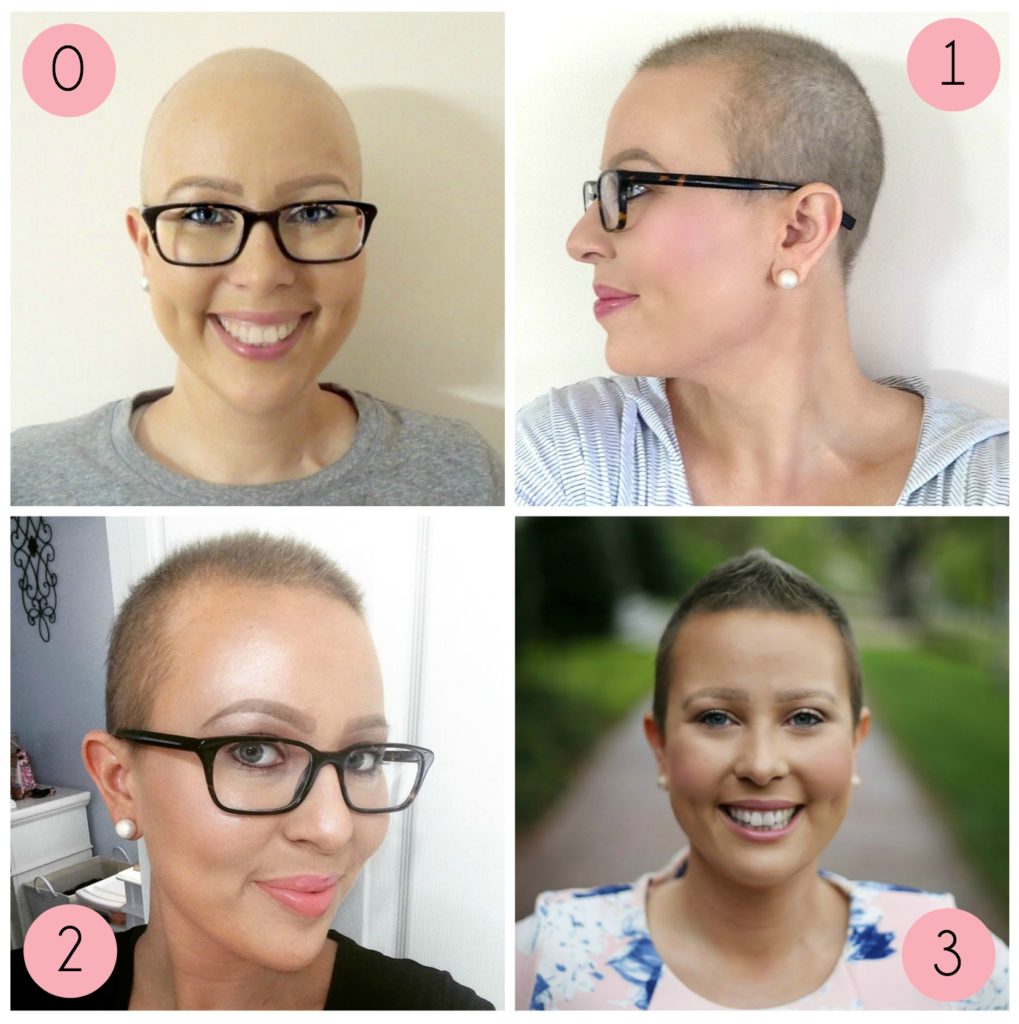
14. Put It On: Wear your hair up as much as possible when on damage control. Put it up in a nice ponytail, a bun, or even a puff if you can. If you wear your hair down, it may brush against your neck, causing it to tangle even more. As a result, it’ll be tough to comb out your hair once you’ve washed it.
It would also help you cut down on the amount of hair styling you perform. The majority of updo hairstyles are simple and quick to style, reducing the risk of breakage.
15. Take a Hair Supplement: Consider taking a hair supplement if you’ve had your vitals evaluated and are deficient in any of the critical nutrients and micronutrients required for good hair development.
You can pick a supplement for a specific nutrient that you may be deficient in after checking with your doctor, or just take a multivitamin developed specifically for hair, skin, and nails.
16. Scalp massages should be incorporated. Massages on the scalp are fantastic! They not only calm you, but they also improve blood flow to your scalp, giving much-needed building blocks to your hair follicles. Massages on a regular basis might really speed up hair development. According to a 2019 research, scalp massages can help people grow hair after they’ve lost it.
Clovol is our hair development oil, which is made with natural components to assist viable follicles in your scalp to generate thicker, fuller hair faster and with fewer negative effects. Apply Clovol on your scalp first, then massage it to improve the effectiveness of your hair massage. Self Development, Productivity, Time Management, and Happiness.
17. Establish a good hair regimen and stick to it. If you’re one of the happy ones whose hair has returned to its previous state, this will be much easier for you because you’ll be returning to your pre-chemo regimen.
You’ll need a new regimen if your hair has come back in an entirely different texture, usually curly or kinky. Curlier and kinkier hair types require extra care, but once you’ve mastered them, you’ll fall in love with your chemo curls! Take a look at this piece we wrote about how to care for curly and kinky hair. There are some useful hints there.
18. Consider using hair regeneration therapy
Some medications help hair regenerate after chemotherapy, but the outcomes aren’t always positive. The majority of hair restoration medicines are designed to address hair loss caused by factors other than chemotherapy. According to some studies, minoxidil (Rogaine) can help with hair regeneration and minimize hair loss following chemotherapy.
For those who have received tamoxifen therapy for breast cancer, doctors may recommend Rogaine. However, it may be inconvenient and costly. Other, less expensive versions of minoxidil are frequently available at pharmacies. Before taking hair regeneration therapies, a person should talk to their doctor about the dangers and advantages.
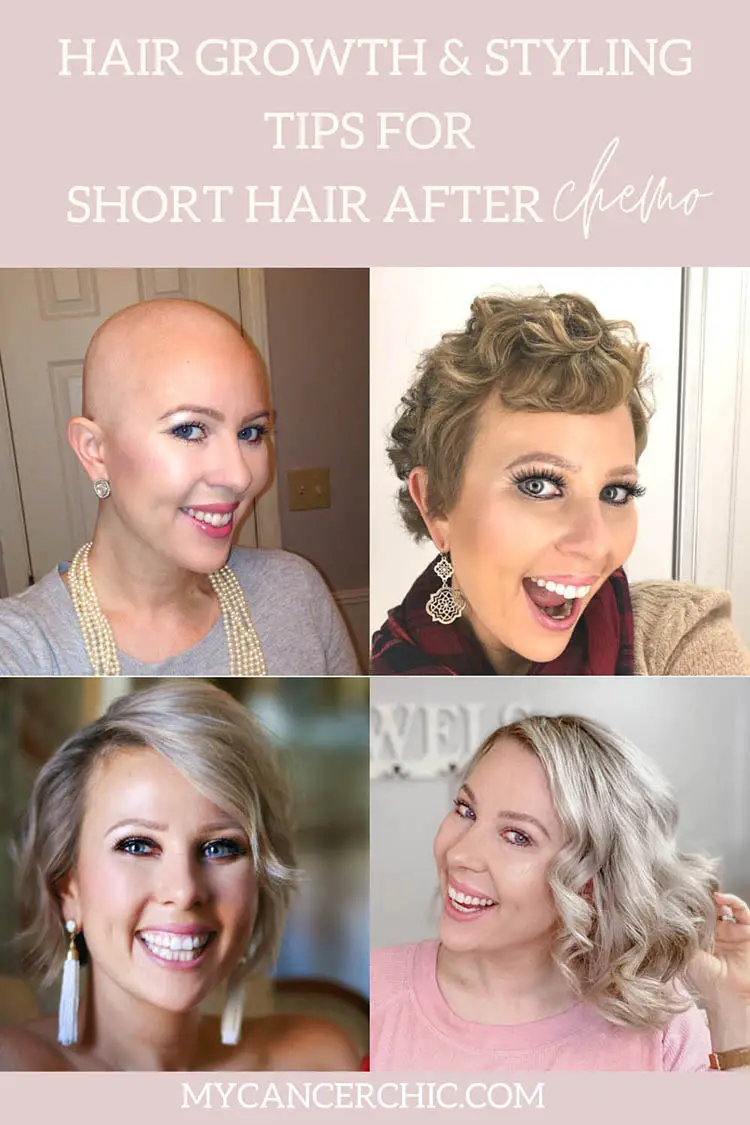
Take away
Hair loss can be disheartening when undergoing chemotherapy, but it is typically only temporary. It’s difficult to know vital solutions on Amazon for your healthy life and what to anticipate once chemotherapy treatments cause hair loss. The length of time it takes for your hair to return to its original texture and color is determined by a number of factors, including:
- genetics and health history
- Other characteristics include hair type.
Hair normally begins to return to normal after 12 months of therapy completion for the majority of persons. Almost everyone who has lost hair due to chemotherapy experiences total hair return within 5 years.
While waiting for their hair to regenerate, finding an appropriate wig or hairpiece might be beneficial. Turbans and other styles of headwear, which are cooler and more pleasant to wear, are also available.
Hair regrowth after chemotherapy might be an indication that a person’s health is improving. If you’re worried about post-chemo hair loss or any other treatment adverse effects, talk to your doctor.
Disclaimer: This article about growing hair after chemotherapy is an information post only and not a medical directive. Please consult your doctor before applying, replacing, or experimenting with any medication.
Other Recommended Reading
- 10 Steps on How to Control Fear and Anxiety
- 23 Life-Changing Best Weight Loss Advice for Beginners
- 20 Effective Weight Loss Tips All Men Should Try
- 17 Healthy Habits to Lose Weight Step by Step
- Get Rid of A Bad Habit Step by Step in 2 Weeks
- 14 Tricks on How to Better Yourself to Face Challenge
- 14 Hacks on How to Improve Yourself Everyday
- 14 Tips on How to Boost Confidence in Yourself
- 10 Monday Motivation Tips to Turn a Successful Week
- 10 Best Places to Visit in Los Angeles LA, CA Next Time
- 10 Top Attractions in Los Angeles in Public Reviews
- 10 Best Day Trips from Los Angeles People Prefer to Visit
- 10 Top Places to Visit in Los Angeles for Refreshment
- 11 Best Attractions in Los Angeles You Must See
- 10 Best Places to See in Los Angeles this Weekend
- Top 10 Los Angeles Attractions for Family Vacation
- 25 Awesome Ways to Grow Motivation for Success
- 50 Cheapest Places to Travel in June – Alone | Family | Kid
- 30 Best Places to Enjoy Vacation in June with Family
- 25 Best Countries to Visit in June – Travel Plan
- 10 Remedies Against Depression and Lack of Motivation
- 10 Best Places to Visit in June Alone or with Family
